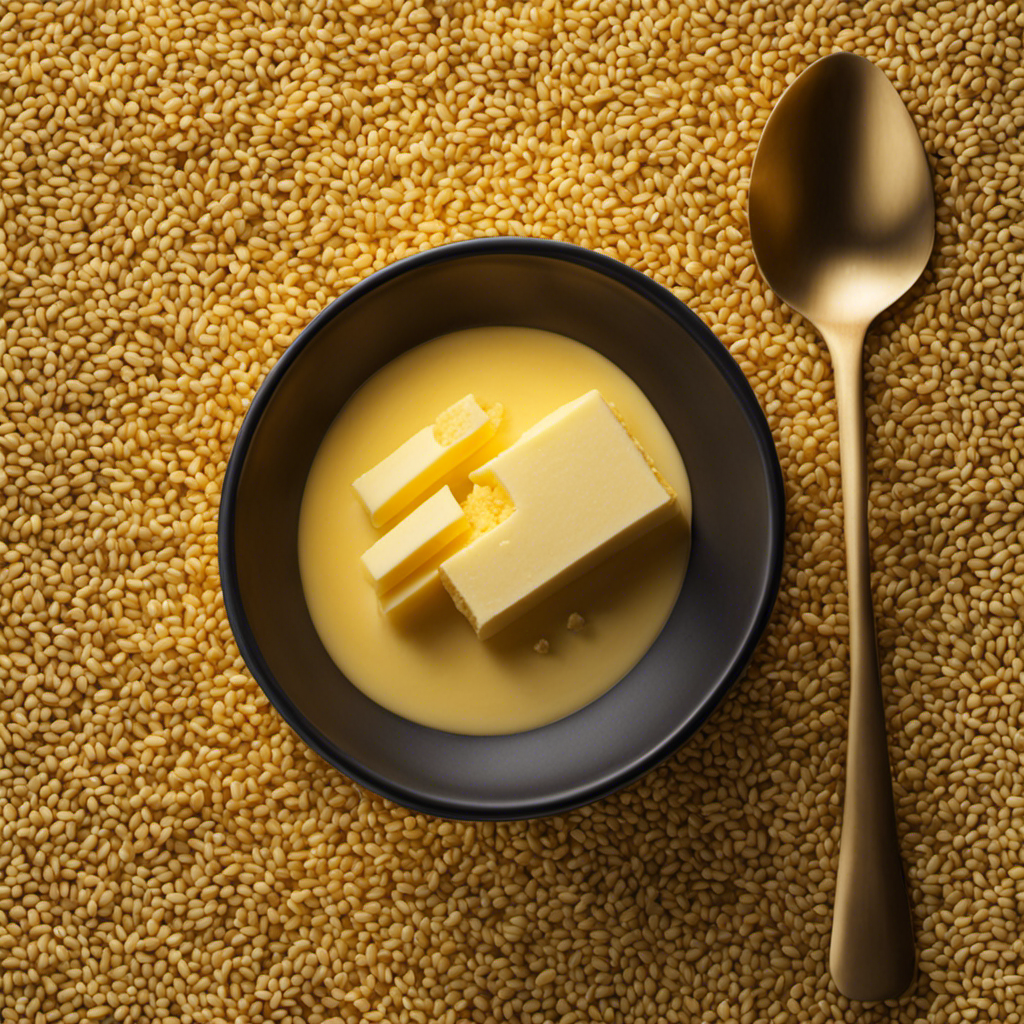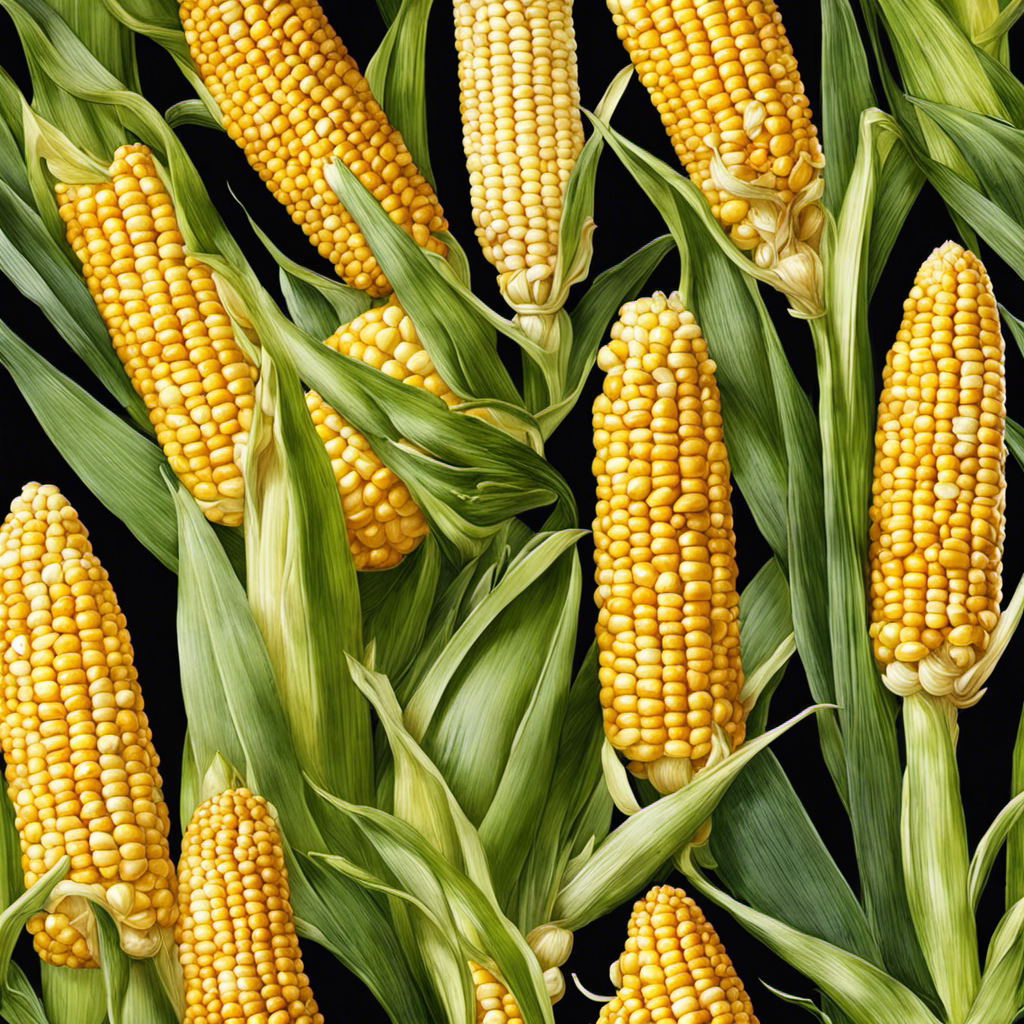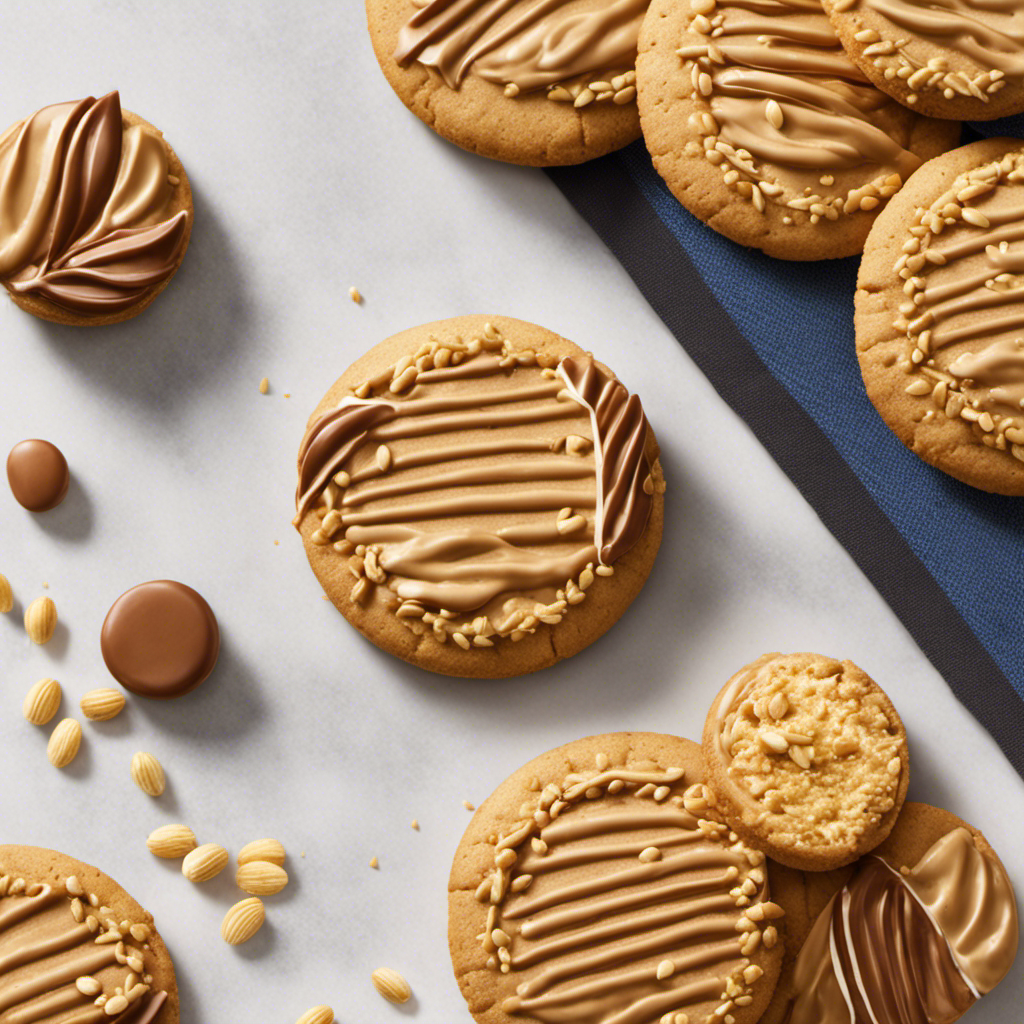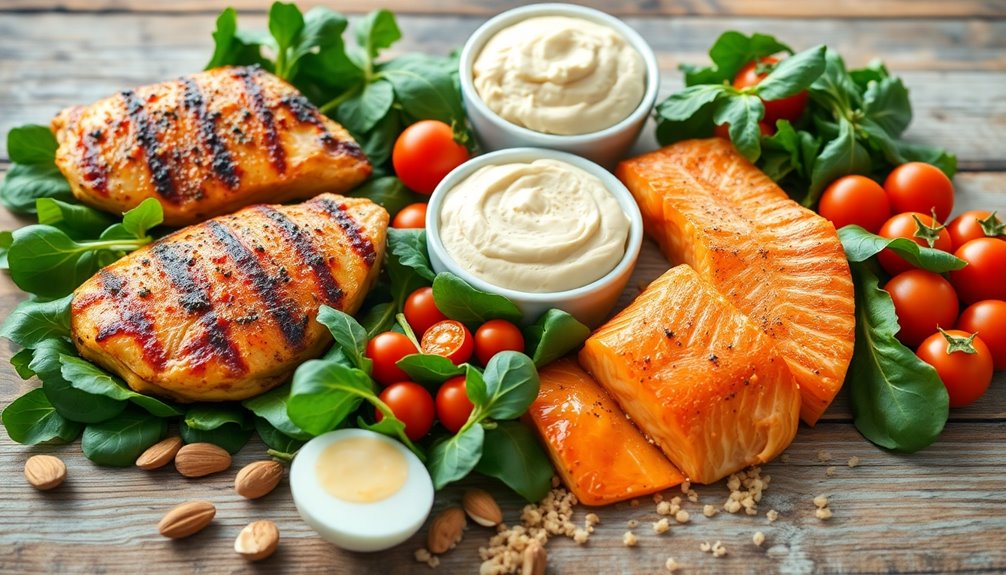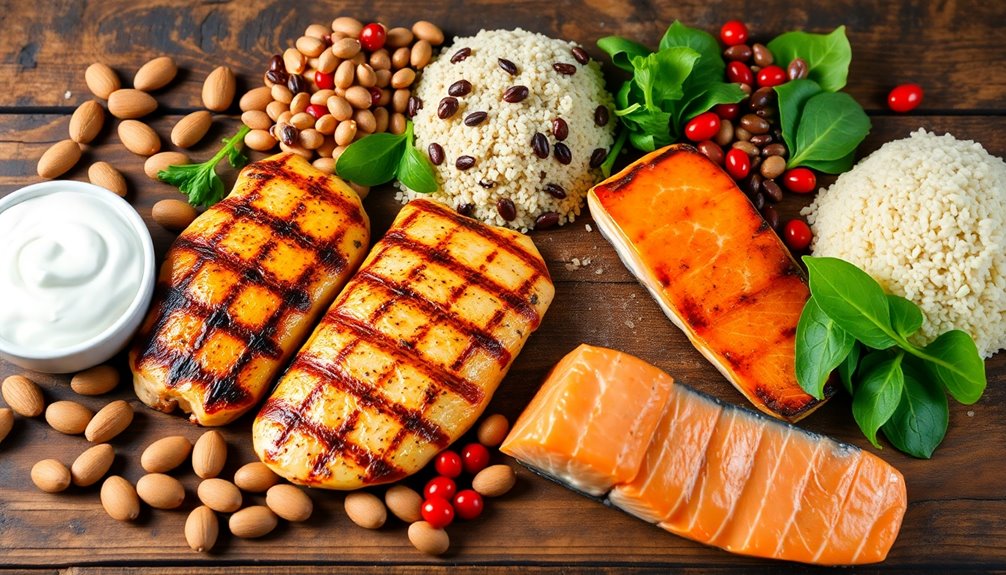I have to admit, butter is one of my favorite ingredients to cook with. However, when it comes to managing my carb intake, I have to be careful.
So, I did some digging and found out just how many carbs are hiding in a tablespoon of butter. Trust me, you’ll wanna stick around for this carb breakdown.
In this article, we’ll dive into the nitty-gritty of understanding carbohydrates in butter and how to make informed choices when it comes to managing your carb intake.
Let’s butter up and get started!
Key Takeaways
- Butter is primarily made up of fat and contains zero grams of carbohydrates.
- Butter can be suitable for low-carb and ketogenic diets.
- Excessive consumption of butter can lead to high saturated fat intake, so it is important to balance butter intake with healthier fat sources.
- Butter has a very low carb content compared to other foods like bread, pasta, and potatoes.
Butter: A Carb Breakdown
You’ll be glad to know that butter actually contains very little carbohydrates. When it comes to understanding the nutritional value of butter, it’s important to note that it primarily consists of fat. A tablespoon of butter contains zero grams of carbohydrates.
This means that if you’re following a low-carb or ketogenic diet, you can enjoy butter without worrying about its impact on your carbohydrate intake. However, it’s essential to consider the health implications of consuming butter in large quantities. While butter can be part of a healthy diet when consumed in moderation, it is high in saturated fat.
Excessive consumption of saturated fat has been linked to an increased risk of heart disease. Therefore, it’s crucial to balance your intake of butter with other healthier fat sources and maintain a well-rounded diet for optimal health.
Understanding Carbohydrates in Butter
To understand the carbohydrate content in butter, it’s important to know the nutritional information. Butter is primarily made up of fat, with very little protein and carbohydrates. In fact, a tablespoon of butter contains zero grams of carbohydrates. This makes it a great option for those looking to reduce their carb intake or follow a low-carb diet.
When it comes to carb-rich dishes, butter can be used in moderation to add flavor and richness without significantly increasing the carb content. However, if you’re looking for a low-carb butter substitute, there are alternatives available. Some options include ghee, which is clarified butter with the milk solids removed, or coconut oil, which is a plant-based oil that can be used as a butter replacement in cooking and baking.
Overall, while butter itself doesn’t contribute to your carbohydrate intake, it’s important to consider the other ingredients in your dishes to maintain a well-balanced, low-carb diet.
Counting Carbs in a Tablespoon of Butter
If you’re counting your carb intake, keep in mind that a tablespoon of butter contains no carbohydrates. This makes it a great option for those following low-carb diets or looking to limit their carb intake.
Here are some carb counting tips to keep in mind when it comes to butter and weight loss:
- Substitute butter with low-carb alternatives like coconut oil or avocado oil for cooking and baking.
- Be mindful of portion sizes when using butter. Stick to a tablespoon or less to keep your carb intake in check.
- Consider spreading butter thinly on your toast or using it as a flavor enhancer rather than a main ingredient to reduce carb content.
By following these tips, you can enjoy the creamy goodness of butter without worrying about excess carbs.
Now, let’s dive into the carb content of butter and how it may affect your diet.
The Carb Content of Butter
When counting carbs, it’s important to know the carb content of butter.
Butter is a popular ingredient in many dishes and can add flavor and richness to meals. However, it’s essential to understand its impact on health, especially for those monitoring their carbohydrate intake.
In comparison to other foods, butter has a very low carb content. While the exact amount may vary slightly depending on the brand, on average, one tablespoon of butter contains zero grams of carbohydrates. This makes it a suitable option for individuals following low-carb diets or those looking to limit their carb intake.
However, it’s important to remember that butter is high in saturated fat and should be consumed in moderation for optimal health.
Now, let’s delve into the specifics of how many carbs are in a single serving of butter.
How Many Carbs Are in a Single Serving of Butter
The carb content of a single serving of butter varies slightly depending on the brand, but on average, it contains zero grams of carbohydrates. This makes butter a great option for those following a low-carb or ketogenic diet.
Here is a carb content comparison of butter with other common foods:
-
Butter vs. Bread: While a tablespoon of butter contains no carbs, a slice of bread can have around 15 grams of carbs, making butter a better choice for those watching their carb intake.
-
Butter vs. Pasta: A serving of butter has zero carbs, whereas a cup of cooked pasta can contain up to 40 grams of carbs. Opting for butter instead of pasta can significantly reduce your carb intake.
-
Butter vs. Potatoes: Butter has no carbs, while a medium-sized potato can contain approximately 37 grams of carbs. Choosing butter as a topping for your vegetables instead of potatoes can help lower your carb count.
With its negligible carb content, butter can be a valuable addition to a low-carb diet. Transitioning to the subsequent section about ‘carb facts: tablespoon of butter,’ let’s take a closer look at the specific carb content of this popular serving size.
Carb Facts: Tablespoon of Butter
When it comes to watching my carb intake, I always like to know the facts about the foods I eat. So, let’s dive into the carb content of butter!
One tablespoon of butter typically contains zero grams of carbohydrates, making it a great option for those following a low-carb or ketogenic diet. However, it’s important to consider the overall context of your meal and the other sources of carbs you may be consuming.
Butter Carb Content
Butter contains a small amount of carbs per tablespoon. While it is primarily known for its high fat content, it also contains a small number of carbohydrates. Here are some key facts about the carb content of butter:
- On average, a tablespoon of butter contains approximately 0.1 grams of carbohydrates.
- This means that the carb ratio in butter is extremely low, making it a suitable choice for low-carb or ketogenic diets.
- The impact of these carbs on blood sugar levels is minimal, as the amount is so small.
Understanding the carb content of butter is important for those who are watching their carbohydrate intake or managing their blood sugar levels. However, it’s worth noting that the primary nutrient in butter is fat, which provides valuable energy and essential fatty acids.
Now, let’s dive into the specific details of the carbs per tablespoon of butter.
Carbs per Tablespoon
There’s only a small amount of carbohydrates in a tablespoon of butter. While butter is not a significant source of carbs, it does contain trace amounts. According to the USDA National Nutrient Database, one tablespoon of butter contains about 0.01 grams of carbohydrates. This is a negligible amount and should not be a concern for most people, especially those following a low-carb or ketogenic diet.
When considering carb sources, it’s important to focus on foods that provide more substantial amounts of carbohydrates, such as grains, fruits, and starchy vegetables. These foods can contribute significantly to your daily carb intake. Monitoring your carb intake is essential for managing conditions like diabetes or following specific dietary plans, such as a low-carb or high-carb diet for athletes.
Carb Considerations for Butter
If you’re watching your carbohydrate intake, it’s important to consider other sources of carbs besides butter. While butter is delicious and adds flavor to many dishes, it can be high in saturated fat and low in nutrients.
Here are some carb alternatives to consider:
-
Sweet potatoes: These vibrant orange tubers are packed with complex carbohydrates, fiber, and vitamins. They make a great substitute for butter in mashed potatoes or as a side dish.
-
Avocado: This creamy fruit is not only a great source of healthy fats but also contains carbohydrates. Mash it up and spread it on toast instead of butter for a nutritious and delicious option.
-
Greek yogurt: With a creamy texture and tangy flavor, Greek yogurt can be a great replacement for butter in baking recipes. It adds moisture and richness while providing protein and probiotics.
Butter and Carbohydrates: What You Need to Know
Carbs in a tablespoon of butter can vary depending on the brand and type. When it comes to butter nutrition, it’s important to be aware of your carb intake.
While butter is primarily composed of fat, it does contain a small amount of carbohydrates. On average, a tablespoon of butter contains about 0.1 grams of carbohydrates. However, it’s worth noting that this amount may differ slightly depending on the specific brand and type of butter.
To make informed choices about your carb intake in butter, it’s essential to check the nutrition labels and opt for unsalted butter if you’re concerned about sodium intake. Additionally, considering portion sizes and using butter in moderation can help you manage your overall carbohydrate consumption.
Transitioning into the next section, let’s explore some strategies for making informed choices about the carbs in butter.
Carbs in Butter: Making Informed Choices
When it comes to carbohydrates, it’s important to be mindful of our choices, especially when it comes to butter.
In this discussion, we will explore the carb content comparison of different types of butter, their impact on our diet, and possible alternatives.
Carb Content Comparison
You can compare the carb content of different food items to make healthier choices. When it comes to spreads, it’s important to consider the carb content.
Here is a comparison of carb content in different types of butter:
-
Regular butter: Typically, a tablespoon of regular butter contains zero carbs. This makes it a good option for those following a low-carb diet.
-
Margarine: Some margarine brands have lower carb content compared to regular butter. However, it’s important to read the labels carefully as some varieties may contain added sugars or other ingredients that increase the carb content.
-
Nut butter: Nut butters, such as almond or peanut butter, have higher carb content compared to regular butter. This is because they contain natural sugars from the nuts themselves. However, they also provide important nutrients like protein and healthy fats.
Impact on Diet
Considering the impact on your diet, it’s important to be mindful of the carb content in different spreads.
When it comes to butter, you might be surprised to learn that it contains minimal carbs. In fact, a tablespoon of butter typically contains less than 1 gram of carbohydrates. This makes butter a suitable option for those following a low-carb or ketogenic diet.
However, it’s important to note that butter is high in saturated fat, which can impact weight loss goals. Additionally, while butter has little to no impact on blood sugar levels, it’s still essential to consume it in moderation as part of a balanced diet.
Incorporating other healthier spreads like nut butter or avocado can provide essential nutrients while keeping carb content in check.
Butter Alternatives
Butter alternatives can be a healthier option for those looking to reduce their intake of saturated fat. Here are three reasons why butter alternatives are worth considering:
-
Healthier fat profile: Butter alternatives often contain healthier fats, such as monounsaturated and polyunsaturated fats, which have been shown to have positive effects on heart health. These fats can help lower bad cholesterol levels and reduce the risk of heart disease.
-
Lower in saturated fat: Unlike butter, which is high in saturated fat, butter alternatives typically have lower levels of this unhealthy fat. By choosing a butter alternative, you can reduce your intake of saturated fat, which is known to raise cholesterol levels and increase the risk of heart disease.
-
Plant-based options: Many butter alternatives are made from plant-based sources, such as olive oil, coconut oil, or avocado. These plant-based options provide additional health benefits, as they are rich in nutrients and antioxidants that can support overall well-being.
Managing Carbs: Butter Edition
There’s a limited amount of carbs in a tablespoon of butter. While butter is not entirely carb-free, it contains only trace amounts of carbohydrates. This makes it a suitable option for those who are managing their carb intake.
When it comes to dairy products, butter is relatively low in carbs compared to other options. For example, a tablespoon of butter contains about 0.1 grams of carbs, while the same amount of milk contains around 12 grams.
If you’re looking for a carb-free spread alternative, you may consider exploring other options like carb-free spreads made from ingredients like oils, seeds, or nuts. These spreads are designed to mimic the taste and texture of butter while being low in carbs.
Frequently Asked Questions
What Are the Health Benefits of Consuming Butter?
Butter, consumed in moderation, can provide health benefits. It contains essential nutrients like vitamins A, E, and K2, which support eye health, skin health, and bone health. However, excessive intake can increase health risks due to its high saturated fat content.
Is Butter a Good Source of Protein?
Butter is not a good source of protein. While it contains trace amounts, it is primarily composed of fat. Compared to other protein sources like meat or legumes, butter falls short in terms of protein content.
How Many Calories Are in a Tablespoon of Butter?
A tablespoon of butter contains about 100 calories. While it does not have any carbs, it is high in saturated fat. It’s important to consume butter in moderation and consider its overall nutritional value.
Can Butter Be Included in a Low-Carb or Ketogenic Diet?
Butter is a staple in low-carb and ketogenic diets due to its high fat content and minimal carbohydrates. It’s important to note that while butter is high in saturated fat, it can still be enjoyed in moderation as part of a balanced diet.
Are There Any Alternatives to Butter With a Lower Carb Content?
There are several low carb spreads and butter substitutes available that can be used as alternatives. These options have a lower carb content and can be a good choice for those following a low carb or ketogenic diet.
Conclusion
In conclusion, understanding the carb content of butter is essential for those managing their carbohydrate intake.
While butter is low in carbs, with approximately 0.1 grams per tablespoon, it still contributes to your overall carb intake.
It’s important to make informed choices and consider the carb content of other foods you consume alongside butter.
Interestingly, studies have shown that a high intake of carbs, especially refined carbs, is linked to an increased risk of obesity and chronic diseases.
Therefore, it’s crucial to strike a balance and prioritize whole, nutrient-dense foods in your diet.
